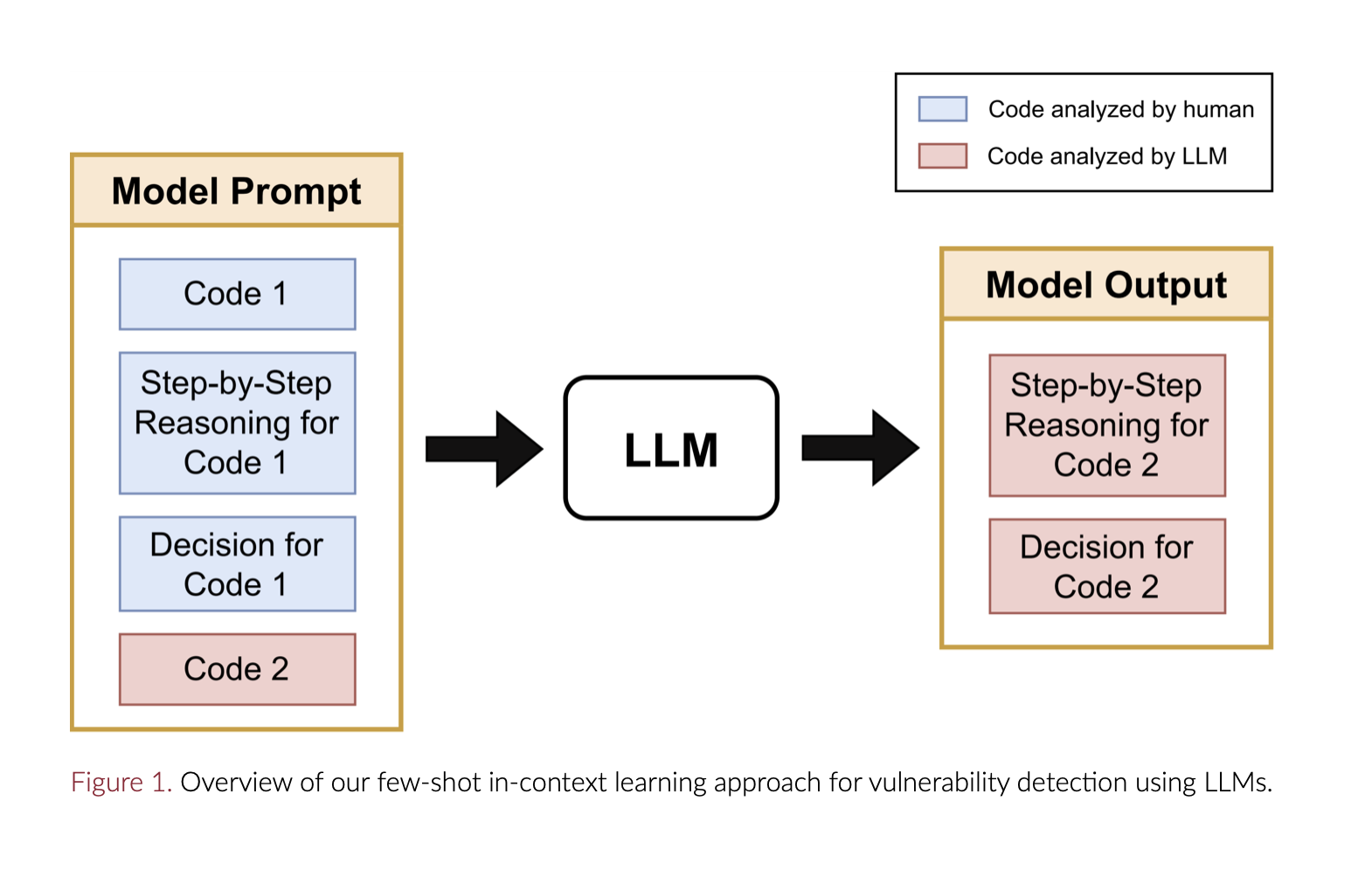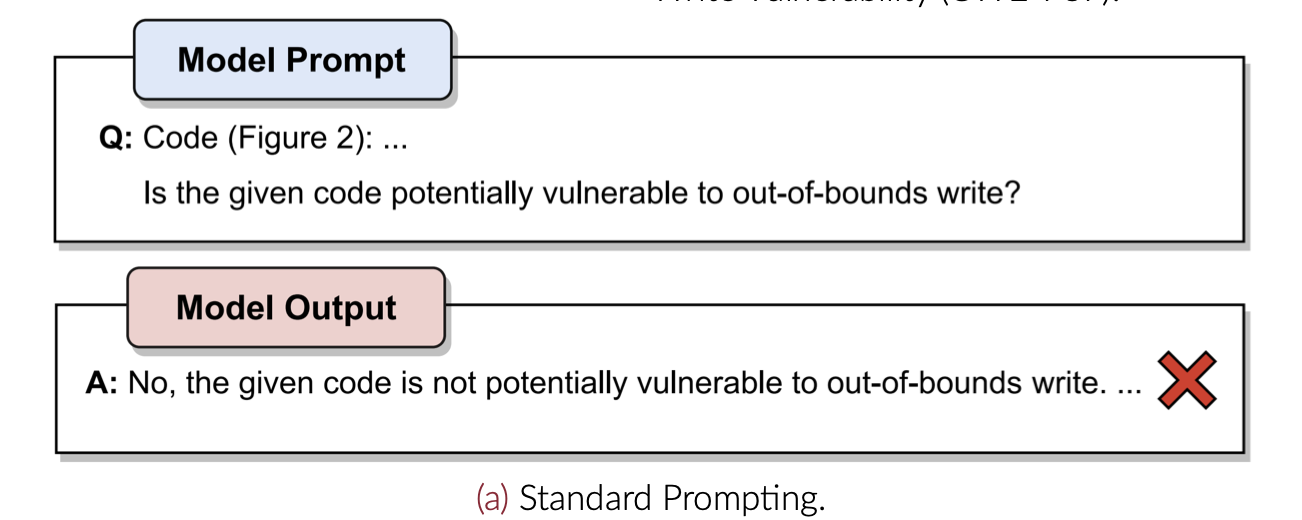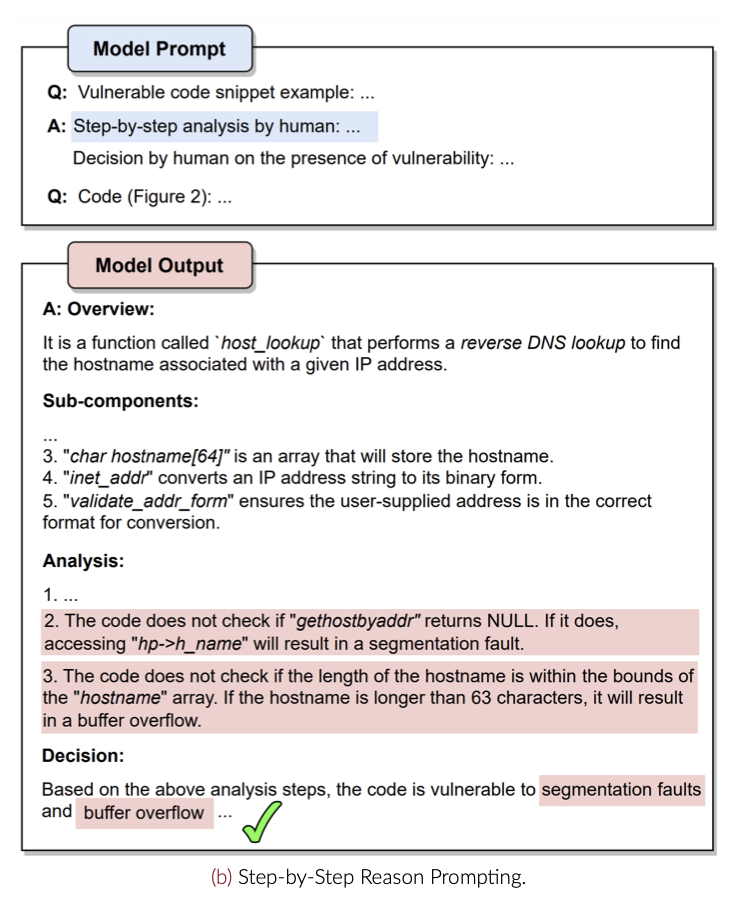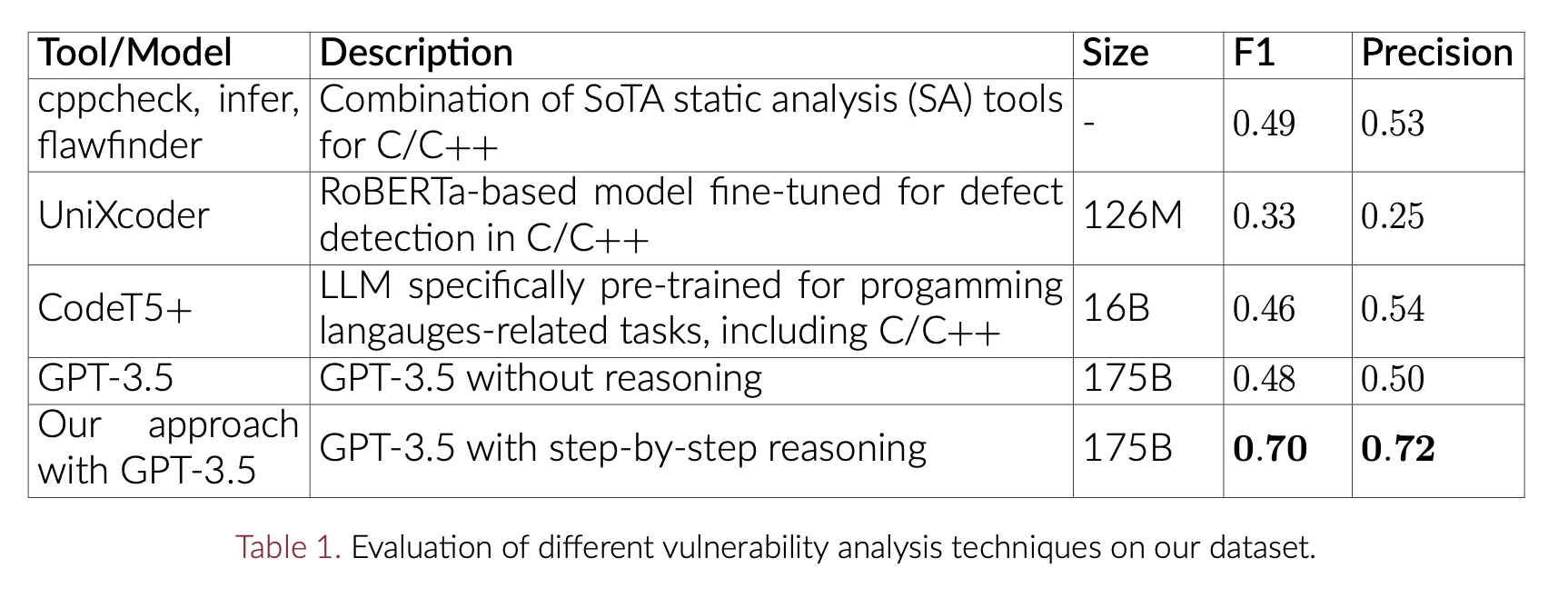AI - LLM with Vulnerability Detection
LLM with Vulnerability Detection
Overall
Motivation
Vulnerability detection is a very critical task for systems security.
Current analysis techniques suffer from the trade-off between coverage and accuracy.
ML-based analysis tools are non-robust, black-box and unreliable to use in real-world 1.
- LLMs demonstrate revolutionizing capabilities for programming language-related tasks but they are also studied in a black-box fashion for both vulnerability detection and its repair.
Security experts follow a step-by-step approach for vulnerability detection. Can using the same approach help LLMs performing better at the vulnerability detection task?
Vulnerability Detection using Large Language Models
Step-by-Step Vulnerability Detection using Large Language Models 2
Objective
- Design a framework to emulate step-by-step reasoning process of a human security expert using LLMs, to efficiently detect vulnerabilities in source code.
Methodology
- uses few-shot in-context learning to guide LLMs to follow a step-by-step human-like reasoning model for vulnerability detection.
- make sure that the model first generates chain-of-thought reasoning 3 and then makes a decision based on that reasoning (Figure 1 and 3b).
Visualizing the Process of Vulnerability Detection
- the behavior of an LLM when it is asked to detect a vulnerability in two different scenarios.
- First, when it is asked to give a direct answer (Figure 3a);
- second, when it is first asked to perform human-expert like reasoning and then make a decision (Figure 3b).
- We choose GPT-3.5 as an LLM and a code snip- pet containing an out-of- bound write vulnerability as a running example.
Evaluation
- it shows that step-by-step reasoning guides the LLM to detect the (CWE-787) vulnerability.
- To systematically evaluate this approach, we create our own diverse synthetic dataset based on a subset of the MITRE 2022 top 25 most dangerous vulnerabilities.
- For each vulnerability we create vulnerable examples and their patches with varying levels of complexity.
- We use the ‘gpt-3.5-turbo-16k’ chat API to compare our approach with SoTA tools (Table 1).
Takeaway
- Following a human-like step-by-step reasoning approach helps LLMs to efficiently analyze code and detect vulnerabilities.
- Our approach provides an explanation for the detected vulnerabilities, which helps user to better contextualize them and to find their root cause.
- Systematic evaluation of this approach on real-world datasets is still required to determine its reliability in real-world use cases.
DanielArp,ErwinQuiring,FeargusPendlebury,AlexanderWarnecke,andFabioPierazzi. Dos and don’ts of machine learning in computer security, 2021. ↩
https://www.bu.edu/peaclab/files/2023/08/USENIX_23_Poster.pdf ↩
JasonWei,XuezhiWang,DaleSchuurmans,MaartenBosma,BrianIchter,FeiXia,EdChi,QuocLe,andDennyZhou. Chain-of-thought prompting elicits reasoning in large language models, 2023. ↩




Comments powered by Disqus.